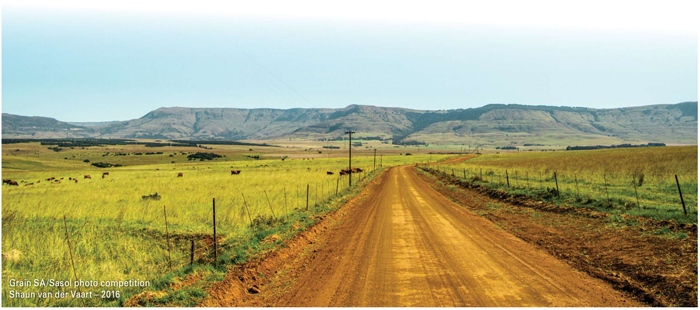November 2017
While listening in church on Sunday to our pastor’s sermon about making a difference in our community, I started thinking of everybody involved in the Jobs Fund. According to the pastor, it has become too easy to pray for certain things without doing anything to make it happen. It is as if we think that by praying our duty is done. Praying is imperative, but doing something about the challenge at hand requires of you to give something of yourself.
Everyone that is part of Grain SA’s Farmer Development Programme is giving something of themselves. Our aim is to develop capacitated black commercial farmers who can contribute to household and national food security by producing the optimum volume of maize on the available land.
The Jobs Fund programme focuses on training and skills development through study groups, farmers days and demonstration trial plots, driven by our skilled team of development co-ordinators and mentors. The team uses their skills and knowledge to teach subsistence farmers to develop sustainable farming practices. These subsistence farmers can now produce enough food for their households and can even sell maize for a much-needed income. The whole idea is for the farmers to start on a small scale and in time to grow and to produce more maize.
In the beginning farmers are taught about the importance of the quality of the soil they farm on. Soil samples are taken and after they have paid to have it analysed, the farmers are taught how to use this new knowledge to increase yields. All the aspects of good production practices are taught: Soil depth, soil type, soil compaction, seed selection, plant population, weed control, pest control, harvesting, storage and marketing.
They are taught how to use chemical herbicides instead of hand hoes. Knowledge of using no-till methods instead of conventional ploughing opens a new world for these farmers as they surely don’t have access to mechanisation.
The experience of mentors working alongside the farmers ensures production of crops and farmers learn valuable lessons. Soon great things start to happen for both the farmers and the mentors. The farmers start trusting the mentors as the improvement in the crops become visible and a relationship starts to develop. The first thing a mentor will say after working with subsistence farmers is how rewarding it is to give something of yourself and that you receive much more in return when you see the farmer grow in knowledge and confidence.
Yields have increased from 1 t/ha to 5 t/ha and in some instances even 8 t/ha or 9 t/ha were recorded. An increase in production leads to farmers having the confidence to expand the number of hectares that they plant. There are a lot of farmers who have grown from 1 ha and 2 ha to 8 ha, 10 ha, 12 ha, 15 ha and 18 ha in the past four years and a few more which makes you very proud and gives you confidence in what you’re doing.
When the Jobs Fund started in the 2014/2015 season planting was done by hand and ox drawn planters and a few two row no-till planters were used by 850 farmers. In the 2016/2017 season the number of farmers grew to 2 905 farmers, which made it impossible to plant everything by hand.
The Department of Agriculture came to our rescue in various ways. No-till planters, boom sprayers and tractors where provided in some areas – which brought us closer together and benefited all the farmers.
Another contributing factor to the success of the project is that farmers make a financial contribution each year that increases as they grow. This strengthens the farmers’ sense of self-worth.
This project won’t be possible without the aid of the various input companies such as SA Lime and Gypsum, Monsanto, Kynoch, Syngenta, and the Sasol Trust. The Jobs Fund project gives all of us the opportunity to experience the miracle of giving away the knowledge that we possess.
Don’t wait to give something of yourself. Get involved and make a difference!

Publication: November 2017
Section: Grain SA